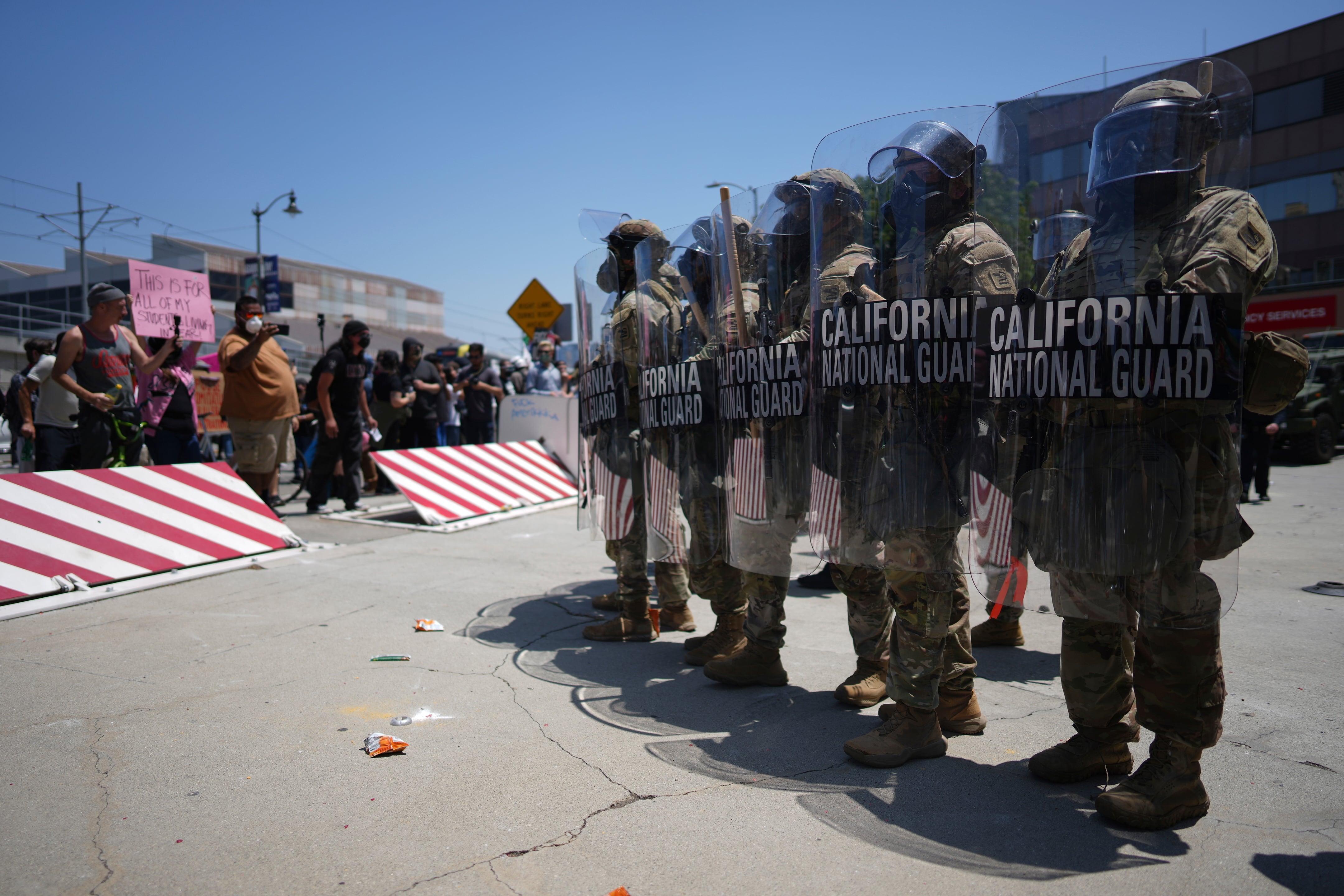Force Design 2030, as currently conceived, is stripping Marine Corps infantry of close, persistent, all-weather artillery fire support.
The Marine Corps is in the process of reducing its cannon artillery (M777) from 21 batteries to seven while increasing its rocket and missile capability. This will achieve an objective force of seven cannon batteries, seven rocket (HIMARS) batteries and 14 missile batteries.
These adjustments favor the deep battle at the expense of the close battle.
To buy into these reforms, one must conclude that: rockets and missiles can replace cannon artillery and that direct support artillery in the close fight is no longer required. This flawed logic draws the inevitable conclusion that Marine infantry no longer serves in its traditional role: to locate, close with and destroy the enemy in combat.
RELATED
At a recent Center for Strategic and International Studies and U.S. Naval Institute webinar, Gen. Eric Smith, assistant commandant of the Marine Corps, championed the advantages of rockets over cannon artillery.
According to Smith, “Artillery is a thing, the capability is long range fires and so we’re focused on long-range fires, and longer-range fires is better.”
He also claimed that cannon artillery lacks the survivability of rocket systems due to detection, attack by loitering systems and slow displacement times.
The myopic focus on long range fires runs counter to the Marine Corps operational concept from Marine Corps Doctrinal Publication 1-0, Operations, of “single battle” (deep, close and rear operations) and fosters a fundamental and operationally fatal misunderstanding of war-fighting.
Battles are characterized by the integration and shaping of deep and decisive close fires. Each weapon system represents a complementary capability with rockets and missiles ideal for critical deep shaping and cannons for the decisive close fight.
Rockets and missiles are constrained by minimum range, trajectory, terrain requirements and limited munitions types. They cannot be employed interchangeably with cannons in close operations.
In a perfect world, all enemy forces are detected and destroyed in the deep fight prior to encountering friendly forces. In the real world, intelligence and target acquisition are imperfect, communication links fail, weapons fail to hit targets and commanders don’t always make the right decisions.
No matter how robust a system we conceive, we will never destroy every target at long range. The massive expenditures of artillery ammunition in the ongoing war in Ukraine demonstrate that even with advances in weapons range and target acquisition, fires alone are indecisive.
In March and April 2003, during the attack to Baghdad, despite an extensive deep effort with aviation and Army rockets, there still were plenty of enemy forces that had to be engaged in the close fight with cannon delivered munitions.
The 1st Marine Division processed more than 1,900 counterbattery radar located enemy weapon positions in the close fight.
Against an overmatched enemy force, three battalions of artillery (nine batteries) often were required to support the single lead maneuver regiment.
Seven cannon batteries are simply insufficient to support large-scale operations with continuous and responsive fires in a peer-to-peer fight.
In the single battle’s close fight, a minimum of one battalion of cannon artillery to support each committed maneuver regiment is required. Anything less runs an unacceptable risk of losing the close fight and the absolute certainty of suffering increased casualties.
Smith’s assertion that rocket systems are more survivable than cannon systems warrants further analysis.
Rockets and cannons are equally susceptible to electronic, acoustic, thermal and visual detection. When firing, rocket systems have significant acoustic and visual signatures, making them more detectable by visual observation than cannons. Countless photos and videos are available that demonstrate this.
It is no secret that HIMARS must shoot and scoot for its survival due to its firing signature. The idea that advanced long-loiter, sensor-fused or discriminating munitions can’t detect and attack rocket launchers is counterfactual. Drones are capable of targeting both cannon and rocket artillery, the assumption that drones will remain invulnerable to countermeasures is proved wrong as witnessed in Ukraine.
The assistant commandant of the Marine Corps’ comparison of rocket and cannon displacement times is a red herring.
The displacement times for both artillery and rockets are the same in the training and readiness manuals.
These times are often beaten by employing innovative tactics, techniques and procedures by well-trained and homogenous crews.
Claiming that rockets can move faster than cannons by comparing HIMARS to towed M777 cannons ignores two decades of worldwide truck mounted artillery developments.
The foremost requirement for M777 development was to limit its weight to 10,000 pounds for external lift by the MV-22. This restriction also limited the ability of the M777 to fire emerging longer-range munitions without increasing its weight.
If the new tactical imperative is survivability by movement, there are C-130 transportable truck mounted cannon systems available that displace as fast or faster than a HIMARS and capable of firing long range munitions. The Chinese pacing threat and our Japanese partner have truck mounted artillery systems in their inventories.
The sole focus of Force Design 2030 on the Chinese pacing threat puts at risk the single battle concept and Marine Corps operational support in other theaters.
The Marine Corps needs to widen its aperture to take into account the numerous advances in cannon technology that continue to make cannon artillery an indispensable contributor on the modern battlefield.
Before we lose our critical cannon capability, we recommend a reexamination of the assumptions that drove the elimination of a highly mobile close support artillery system.
As it stands, the decision derived by Force Design simulations and war-gaming was preordained. The claim that seven cannon batteries combined with seven HIMARS batteries are sufficient to support a Marine expeditionary force engaged in sustained operations has no operational foundation.
The Marine Corps is best served by maintaining an adequate inventory of one cannon artillery battalion for each infantry regiment to provide the support that our infantry expects when they must cross the last hundred meters to close with and destroy the enemy or to repel that enemy in an attack on Marine forces.
Replacing cannon artillery with rockets risks the lives of Marines and success of close operations.
Col. Stephen W. Baird (retired) was a career Marine artillery officer. He had extensive artillery and operational level experience including command of a direct support artillery battalion, assistant chief of staff G-5 plans for I Marine Expeditionary Force, chief of staff 1st Marine Division and chief of staff for Marine Corps Forces Central Command during Operation Iraqi Freedom and Operation Enduring Freedom.
Col. Michael P. Marletto (retired) was a career Marine artillery officer. He had extensive artillery and operational level experience including command of a direct support artillery battalion, command of an artillery regiment ― 11th Marines ― during the attack to Baghdad and assistant chief of staff G-3 operations for I Marine Expeditionary Force (Forward) in Iraq.
Col. Timothy C. Wells (retired) was a career Marine infantry officer. He had extensive infantry and operational level experience including command of a Marine Corps embassy security region, command of Marine Corps Mountain Warfare Training Center, G-3 future Operations officer/G-5 plans officer for I Marine expeditionary force and assistant chief of staff G-3 for Marine Corps Forces Central Command during Operation Iraqi Freedom and Operation Enduring Freedom.
Have an opinion?
This article is an op-ed and as such, the opinions expressed are those of the authors. If you would like to respond, or have an editorial of your own you would like to submit, please email Marine Corps Times Editor Andrea Scott.
Want more perspectives like this sent straight to you? Subscribe to get our Commentary & Opinion newsletter once a week.










